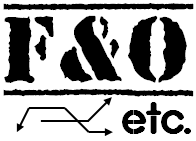|
|
In this article, we will cover the Options Spreads. Let's start with the basic questions first and proceed accordingly:
What are Options Spreads?
Options spread are combinations which can be formed by taking atleast two or more positions in various options. The two or more positions in options to be taken are usually on the same underlying stock (say Microsoft or IBM), but they may have different expiry dates, different strike prices and/or may be different types of options (calls or puts)
Options Spreads: Example and Payoff Functions

What are the Call Options Spreads or Call Spread?
A Call Spread is the net combination position in options which we get when the two or more call option positions are taken by a trader. Since only call options are taken, hence the name CALL OPTION SPREAD or simply CALL SPREAD.
These call options may be of different expiry dates and/or different strike prices and the trader may take a LONG or SHORT position (Buy or sell)
What are the Put Options Spreads or Put Spread?
A Put Spread is the net combination position in options which we get when the two or more PUT option positions are taken by a trader. Since only put options are taken, hence the name PUT OPTION SPREAD or simply PUT SPREAD.
These PUT options may be of different expiry dates and/or different strike prices and the trader may take a LONG or SHORT position (Buy or sell)
What are the benefits of trading Options Spreads?
The name "spread" suggest a limit. Basically, the net position which you receive in an options spread position has limited scope of profit and limited scope of loss - that makes up the spread.
And that is the benefit of trading in options spread - you have low risk, low return strategy. For e.g., if you take a naked long call option position, then as a buyer you might loose the entire amount of your option premium if the underlying ends up below the exercise price or strike price. Hence, the loss will be 100% to you.
However, in a spread position, you will have limited exposure, and limited profit potential. So you are comparatively safe. See examples at the end of this article.
Another benefit is that the cost of getting into a spread is less compared to cost of trading in naked call or put trades.
Usually, a spread will involve buying one position and selling other. So you receive money from selling a position. Hence, you pay something for buying one option position and receive something from selling another option position. Therefore, your net money required is less in options spread.
What are the various Options Spreads available for trading?
There are multiple option spreads available for trading. Here we list a few:
- Call Spreads
- Put Spreads
- Bear Spreads
- Bull Spreads
- Calendar Spreads or - Horizontal Spreads
- Vertical Spreads
- Diagonal Spreads, etc. See related articles on each of them

0 Comments: Post your Comments
Wish you all profitable derivatives trading and investing activities with safety! = = Post a Comment